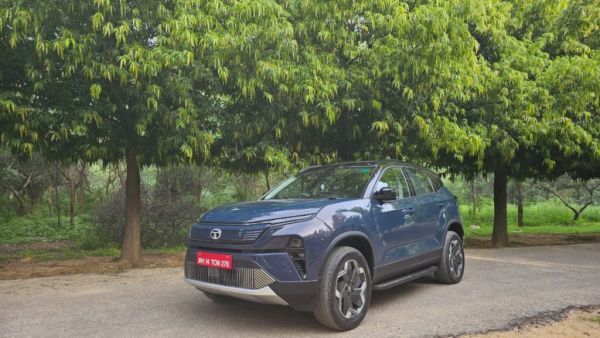
Tata Motors recently launched its flagship electric vehicle, the Harrier EV. Starting from Rs 21.49 lakh to Rs 28.99 lakh, exshowroom. We drove the Harrier EV QWD version, or the allwheeldrive model, which offers performance, features and even range. We tell you how all these features and more of the EV SUV translate in realworld driving conditions. Here are the top five pros and cons.
Tata Motors has said that they didn’t want to change the Harrier EV’s design because they wanted to retain its big, hulklike road presence. The EV looks muscular and solid, and no one can confuse it with any other vehicle. The other thing that a customer will know with a glance is that it’s a premium vehicle, as the internal combustion engine version is its second most expensive SUV after the Safari. So with that in mind, a buyer will know that it will be a fully loaded vehicle.
The Harrier QWD is the first madeinIndia EV SUV to be powered by twin motors, one mounted on each axle. It is also the first indigenous EV SUV to offer an allwheeldrive system. The front motor produces 155 bhp, and the rear motor has an output of 235 bhp with a cumulative torque output of 504 Nm. It offers four drive modes — Eco, City, Sport and Boost — and six terrain modes — Normal, Snow/Grass, MudRuts, Sand, Rock Crawl and Custom.

The Harrier EV allwheel drive is powered by a 75 kWh battery that returns a range of 622 km as per MIDC, but Tata Motors has revealed that in realworld traffic, it should be between 460 km and 490 km. We managed to achieve a range of around 430 km, but we did stop and shoot the Harrier EV on idle, so the range could be further bumped up to the realworld range that the company has stated.
Tata Motors has thrown the kitchen and pretty much even more. The cabin boasts a 14.5inch infotainment system along with a 10.25inch digital instrument cluster. It gets a 10speaker JBL Black audio system with Dolby Atmos 5.1, an indash camera for front and rear, a digital rearview mirror, a 540degree camera that reveals the terrain beneath the bonnet and Auto Park Assist that helps you park the vehicle with the help of the key fob. In terms of safety, it is equipped with Level 2 DAS; the top model gets 7 airbags, Hill Descent Control, Hill Hold Control and tonnes of goodies.

On the flipside, Tata Motors is known to have technical glitches, and during the media drive, many came across them. Some complained about the infotainment system going blank and the warning lights in instrument malfunction. Also, with a 360degree camera already available, Tata could have used this also for its indash camera.
For an SUV that measures 4.6 metres in length, limited space may not resonate with the Harrier EV’s dimensions, but this will surprise you. Based on the Acti.ev platform, the floor is raised higher to accommodate the battery underneath. Due to this, the raised rear seating position can be slightly tricky for taller passengers.

Also, if someone over 6 feet tall is sitting in the front passenger seat, the rear space can be a bit of a squeeze for another tall passenger. Hence, both the underthigh support and the head roof can be left wanting. The other thing to keep in mind is the limited boot space of 502 litres, as the rear space tucked beneath takes up the luggage area.